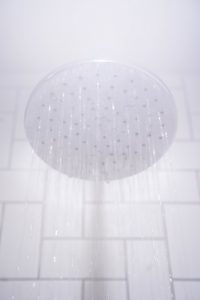 Have you ever spotted small red bumps on your upper arms or along your thighs? Did you pick at them expecting them to be pimples but became frustrated and confused with their sandpaper texture and lasting appearance? You may have Keratosis Pilaris, a common skin condition caused by buildup and blockage within hair follicles or pores.
Have you ever spotted small red bumps on your upper arms or along your thighs? Did you pick at them expecting them to be pimples but became frustrated and confused with their sandpaper texture and lasting appearance? You may have Keratosis Pilaris, a common skin condition caused by buildup and blockage within hair follicles or pores.
What is Keratosis Pilaris?
Keratosis Pilaris is a common skin condition that is caused by the buildup of keratin (hair protein) within hair follicles. Normally, skin cells are sloughed off during showers or shed throughout the day, but sometimes the buildup can clog hair follicles or pores causing tiny bumps on the skin. These bumps may resemble goosebumps, chicken skin, or small pimples and may have a rough sandpaper-like feeling.
It is common in children and teenagers, but often gradually disappears with age. It is common in those who have a history of eczema, asthma, hay fever, obesity, extremely dry skin, or a family history of the condition.
This skin condition is not contagious and is entirely harmless, though it can be bothersome for patients due to the unattractive appearance and irritating dryness that is associated with the condition. While the most notable symptom of Keratosis Pilaris is the appearance of the bumps on the skin, these bumps can also become itchy, irritable, and cause dry skin. These bumps can occur anywhere on your skin, but it is most common on the upper arms, thighs, buttocks, and cheeks.
As the condition is harmless and non-threatening, treatment is often unnecessary. General health tips to take into account for those who struggle with Keratosis Pilaris include:
- Avoid taking long hot showers or baths as they can dry out the skin
- Gently exfoliate during your showers and remember to moisturize afterward
- Keep your body hydrated by moisturizing several times a day
- Maintain adequate moisture levels within your home with a humidifier
There is no cure for Keratosis Pilaris, but persistent and consistent treatment can help alleviate symptoms and help you to achieve clearer skin. If the at-home treatment proves ineffective, a dermatologist may recommend moisturizing treatments or topical creams to help remove dead skin cells or prevent blockage within pores. Microdermabrasion treatments and chemical peels can also help to exfoliate your skin and prevent keratin buildup.
For more information on Keratosis Pilaris or how to manage this condition, please contact Washington Dermatology Consultants today.
